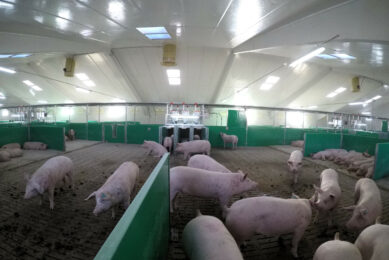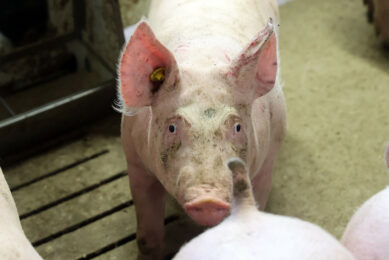Swine Influenza in the spotlight at Merial Symposium
During the 6th International Symposium on Emerging and Re-emerging Pig Diseases held in Barcelona, Spain earlier this month, nearly 400 pig specialists attended the Merial Satellite Symposium ‘Update on Swine influenza’. New epidemiological data on swine influenza viruses (SIVs) and their clinical impact were discussed by speakers from four European countries relevant to the swine industry, and the Merial Flu Kit, a diagnostic “tool box”, for the rapid detection of the presence of SIV, presented.
Dr Gerard Martin Valls (CreSA, Barcelona, Spain) described a prevalence study performed on 98 Spanish farms which did not vaccinate against swine flu. 94% of these farms were found positive for SIVs, while several viruses were found to co-circulate on 75% of the farms. The dominant strain was the H1N1 avian-like European strain (57.1% of farms), but H3N2 and H1N2 subtypes were also prevalent (54.4 and 20.6%, respectively). He also described the results of a longitudinal study on a co-infected farm, where H1N1 was circulating actively without causing any clinical signs of swine flu, although the farm had a mortality of 20%, with pneumonia lesions found at post-mortem.
Dr Giampietro Sandri, head of the largest swine integration system in Italy, described the swine flu surveillance system implemented in his production flow. Farmers and veterinarians are asked to report any influenza-like illness in pigs and to take swabs from these animals which are then analysed at the company’s own diagnostic laboratory. Again, all three SIV subtypes were detected, with H3N2 becoming less prevalent in 2008-2009, but reappearing in 2010.
The enzootic form of swine flu was not observed in this system, only the epizootic form with outbreaks of varied severity. Dr Sandri described several extremely severe outbreaks of swine flu in sows due to H1N2 which caused up to 4.8% mortality on farms of several thousand sows. These farms were then vaccinating against swine flu , but the H1N2 component was not included in the commercial vaccines at the time. He indicated clearly that vaccination had contributed to preventing the disease and to the positive economics of his business.
Dr Andreas Palzer (Dipl. ECPHM, Germany) reported on a nation-wide prevalence study on swine flu conducted in 2009, which also showed co-circulation of all three subtypes H1N1 (69%), H1N2 (39%) and H3N2 (62%). Since the start of 2011, only the trivalent vaccine (equivalent of Gripovac 3) is available on the German market. ‘In our practice, 50% of the sows are vaccinated,’ he stated. He also described two clinical cases where H1N2 virus infection caused an unusual clinical presentation: ‘on both farms, an increase in the incidence of reproductive disorders was observed.’ Serology showed an active circulation of H1N2. ‘Vaccination against swine flu allowed the average monthly return-to-estrus rate to drop from 15% to 8-9% in the first farm, and from 15% to 2.8-5% in the other.’
Dr Tom Meyns (Dipl ECPHM, Merial, Belgium) provided recent results of swine flu monitoring in Belgium. H3N2 was found to be the dominant subtype (66%), followed by H1N1 (48%) and H1N2 (36%). He also presented the Merial Flu kit, which helps practitioners to test animals providing a quick and reliable diagnosis and to send samples to the laboratory for virus subtyping and isolation. The kit contains a thermometer, pen-side test strips, to be used on animals presenting flu-like signs for 3 days or less, swabs and a standard sample forms to note the ID and history of the sampled animals. This kit is available to all swine practitioners through the Merial network.
Gripovac3* by Merial is the first-ever trivalent vaccine against Swine Influenza to include the H1N2 subtype.











